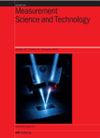基于锂电池容量差异的终生健康状况阶段性评估
IF 3.4
3区 工程技术
Q1 ENGINEERING, MULTIDISCIPLINARY
引用次数: 0
摘要
为避免锂电池在实际应用中出现过度使用或利用不足的情况,应及时评估锂电池的健康状况,以确保安全并最大限度地提高利用率。本文提出了一种显示锂电池 SOH 的健康指标。首先,根据磷酸铁锂电池的工作原理和老化现象,阐述了锂电池的降解机理,并对目前电池老化现象研究中存在的问题进行了阐述。其次,针对电池老化问题带来的隐患,选取容量方差的变化来构建锂电池的健康指标。最后,根据所构建指标在整个寿命期内的变化趋势,将锂电池的性能衰退状态划分为四个阶段,即第一层固态电解质界面膜形成阶段、正常工作阶段、新固态电解质界面膜形成阶段和内阻上升阶段。利用麻省理工学院斯坦福-丰田研究中心的电池数据集验证了所提出的方法。结果表明,在新固态电解质界面膜阶段,锂电池的性能会随着温度的快速上升而加速退化;在内阻上升阶段,内阻会急剧增加,容易导致热失控等事故。所提出的健康状态评估方法与其他方法进行了比较,结果表明,所提出的方法有助于确保锂电池的安全性并最大限度地提高其利用率。本文章由计算机程序翻译,如有差异,请以英文原文为准。
Stages assessment of state of health in a lifetime based on the capacity variance of lithium batteries
To avoid the overuse or underutilization of lithium battery in practical applications, the state of health of lithium battery should be assessed in time to ensure safety and maximize utilization. A health indicator is proposed to show the SOH of lithium battery in this paper. Firstly, the degradation mechanism of lithium battery is described based on the working principle and the aging phenomenon of lithium-iron phosphate battery, and the existing problems in the current research on battery aging phenomenon are expounded. Secondly, to deal with the hidden dangers caused by the aging problem of the battery, the variation of capacity variance is selected to construct the health indicator of lithium battery. Finally, the performance degradation state of lithium battery is divided into four stages according to the changing trend of the constructed indicators in the whole lifetime, which are the formation stage of the first solid electrolyte interface film stage, the normal working stage, the new solid electrolyte interface film stage and the internal resistance rise stage. The battery data set from MIT-Stanford-Toyota Research Center is utilized to verify the proposed method. The results show that the performance of lithium batteries will accelerate degradation with temperature rapidly rising in the new solid electrolyte interface film stage; the internal resistance will increase sharply in the internal resistance rise stage, which can easily lead to accidents such as thermal runaway. The proposed health state assessment method compares with other methods, and it is shown that the proposed method helps to ensure safety and maximize the utilization of lithium batteries.
求助全文
通过发布文献求助,成功后即可免费获取论文全文。
去求助
来源期刊

Measurement Science and Technology
工程技术-工程:综合
CiteScore
4.30
自引率
16.70%
发文量
656
审稿时长
4.9 months
期刊介绍:
Measurement Science and Technology publishes articles on new measurement techniques and associated instrumentation. Papers that describe experiments must represent an advance in measurement science or measurement technique rather than the application of established experimental technique. Bearing in mind the multidisciplinary nature of the journal, authors must provide an introduction to their work that makes clear the novelty, significance, broader relevance of their work in a measurement context and relevance to the readership of Measurement Science and Technology. All submitted articles should contain consideration of the uncertainty, precision and/or accuracy of the measurements presented.
Subject coverage includes the theory, practice and application of measurement in physics, chemistry, engineering and the environmental and life sciences from inception to commercial exploitation. Publications in the journal should emphasize the novelty of reported methods, characterize them and demonstrate their performance using examples or applications.
 求助内容:
求助内容: 应助结果提醒方式:
应助结果提醒方式:


